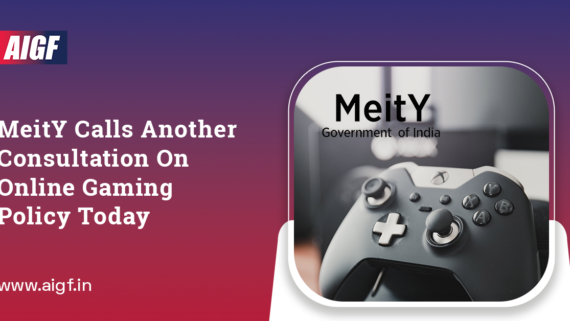For mobile gaming, eSports and fantasy sports, and different iterations of digital entertainment platforms, 2020 was a boon. 2020 was the year in which many games were downloaded to a great extent.
India’s Booming Mobile Gaming Industry: A Multi-Billion Dollar Opportunity
The gaming industry has been an unexpected beneficiary of last year’s lockdown due to the pandemic that grasped the world. From online games to rival movies and OTT platforms, a new digital entertainment frontier emerged with the power to in both popularity and revenue.
For mobile gaming, eSports and fantasy sports, and different iterations of digital entertainment platforms, 2020 was a boon, given the lack of entertainment options, a captive audience, and a coming of age that accelerated rapidly. 2020 was the year in which many games were downloaded to a great extent. Popular games in India include Ludo, Candy Crush, Lords Mobile, Carrom Pool, and Subway Princess Runner.
Fantasy sport, catalyzed over recent years by the Indian Premier League (that started on April 9 and was suspended some days ago) scoring some whooping IPL sponsorship. Fantasy sports firms raised almost $95 million in a Series D round earlier this year, not just becoming the sponsor of the kit and merchandise partner for the Indian cricket team, but also bought the jersey sponsorship rights for Cricket Ireland.
Industry insiders have clearly marked out the differences between the three – eSports, mobile games, and fantasy. In eSports, the publisher hosts the competition directly, which has an audience and a prize at stake. Chess, not yet an Olympic discipline, is gradually fusing into eSports. The world’s top chess player, Magnus Carlsen, was among the highest-earning eSports players of 2020. Another grandmaster, Hikaru Nakamura, also became the first professional chess player to sign up with an eSports organization.
Mobile gaming is often downloading free-to-play games on the phone for leisure and social interaction. Starting with simpler ones such as Rummy, they include more complex shooter video games like Call Of Duty (mobile), Among Us, and Free Fire.
Finally, fantasy sports require the user to create teams around live matches, with the objective to win based on how his/her players will perform in comparison with the actual match performance.
According to Sensor Tower, a provider of app insights, by the end of 2020, India had the most downloads of mobile games globally. At 7.3 billion, it had about 17% of all worldwide downloads. The explanation for these numbers is fairly simple. Over the years, mobile data has become cheaper. Android phones, which have over 95% of the market share in India, get a lot of content pre-loaded, including YouTube. New gamers could take tutorials – for example, Free Fire has hundreds of “how-to” videos – which made the adoption of gaming easier.
Gaming’s gain came from the losses to cinemas, the absence of live sport, and drought in socializing and travelling. Its user base is understandably skewed. About 80% of mobile gamers are male, half of them are of the 18-24 age group, and the rest mostly between 24-34. India has an estimated 300 million gamers. And with over 700 million smartphone owners and counting, there’s massive potential for growth. While other forms of entertainment – reading or cinema or OTT – are linear with a one-way storytelling format, gaming on the other hand is interactive. There is no single story that unfolds in front of the user.
Along with that, about 90% of the mobile gaming audience also comes from smaller towns, with scarce or no access to malls or nightclubs. Social gaming platforms thus allow users access to a wider community.
Gaming’s growth also runs parallel to the popularity of Zoom and the fame of Clubhouse, a by-invitation-only audio chat app. Users became – more comfortable streaming. Office meetings were carried out on video calls, which normalized being on camera. Parents stopped asking children why they were chatting with someone on video because they were schooling online.
The ban on PUBG, on the back of diplomatic hostilities with China, dealt a blow to the gaming audience which took some time to recover. Players who’d spent time building audiences and skillsets were left high and dry. But it propelled the popularity of other games, like Free Fire. One of the fallouts of this evolution of gaming habits is the demise of the gaming parlors, a favored gathering den for the previous generation. People no longer had to duck into dingy rooms behind a dirty curtain to play against bots and machines anymore.
Figures vary, but an average of all accounts suggests that gaming globally is an over $150 billion business and projected to be $295 billion by 2026. While there is no structured accounting for it in India, rough figures have placed it at $2 billion to $4 billion. For a little over a decade-old industry, a majority of this growth came during the last three-and-a-half years, on the support of strong investor backing, a young audience with purchasing power and a well-informed community sought out by brands.
In the last three years, there have been a reported 35 deals – mergers and acquisitions – in excess of $350 million in the gaming universe. “The number of gamers, number of deals, number of platforms launched, and revenue turnover – the entire momentum around the industry has shifted,” says Roland Landers, CEO of All India Gaming Federation, an industry body for online skill gaming.
India still has unclear legislation over gaming, primarily because it’s a state subject. That means what’s legal in Sikkim could get struck out in Tamil Nadu. “Something central, which gives us protection from arbitrary state laws, is the need of the hour and appeal of this industry,” says Landers. “We fall in the middle of entertainment, IT technology, sport, and, to an extent, commerce.”
The evolution of the Indian gamer too has seen some shortcomings, like not paying for in-app purchases. A few courts may have declared fantasy as a skill-based real money game, but it’s still not set in stone. The nascent nature of the industry has not triggered obsession, like in Korea or Japan, where every other street has a game de-addiction center. But regulation, from game developers and some self-policing, would have to develop to keep the situation under control in that aspect. There still remains the challenge of perception, with confusion over betting and gambling. With 200-300 developers in a slightly cluttered, unorganized space, with more to come in, not everyone will be aware of legalities and how to protect the operator and consumer against it.
Even though most gamers still prefer foreign games, like Valorant, Brawl Stars, and Clash Of Clans, some Indian ones have managed to make a dent. As Indian companies catch up on investment and infrastructure, there will be more indigenous products to look for.











Comments
Comments are closed.